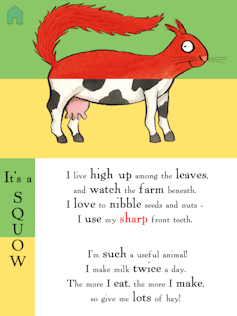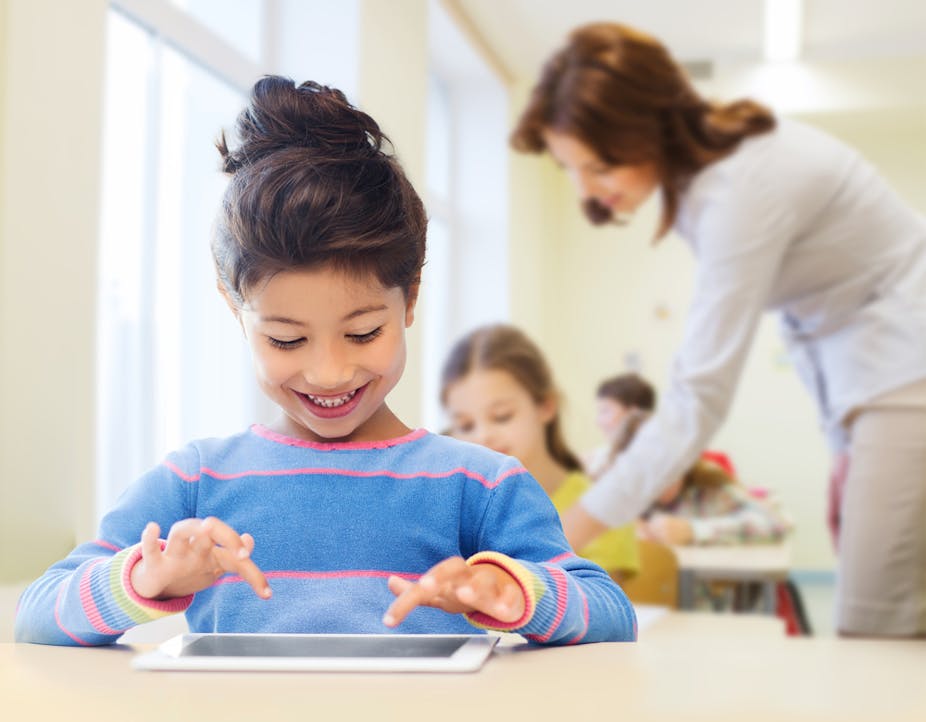The argument over whether children’s digital books count as educational storytime or just screentime has been going on for a while. Given that digital interactive books (often called storyapps) are hybrids of books, short films and digital games, their educational value largely depends on whether they are used to promote specific literacy skills or just to have fun with a story.
Many schools have begun to use ipads, Google Chromebooks and other portable touchscreens in lessons, giving children more opportunities to access digital books and storyapps. Accessing an interactive digital book is a different experience from clicking through an e-book on the desktop PC and many teachers, especially those in primary schools, are legitimately questioning the value of using these resources in their literacy lessons.
Digital books with interactive features such as games and hotspots (areas in the digital text or image which act as hyperlinks, activated by tapping on the screen) have been found to impede children’s story comprehension and vocabulary learning. Yet, there is also evidence to suggest that children are attracted to and motivated to read those digital books which are fun and personalisable and that children do access such books at home.
Choosing the right digital book
Teachers are best positioned to ascertain how particular books and e-books fit with their teaching objectives and how the resources can be best incorporated within existing reading activities such as guided reading or perhaps offered as an extra resource during free play time. This is why the UKLA Children’s Book Award, which is judged entirely by teachers, is held in high esteem by teachers, who regard the shortlisted titles as a reliable indicator of the best books of the year for inclusion in their classroom or school library.

For the first time in their eight-year existence, the awards included a Children’s Digital Book Award. The scheme, run in partnership with Book Trust and sponsored by The Open University, was piloted with selected teachers who, from the shortlisted titles, chose Axel Scheffler’s Flip Flap Safari app by Nosy Crow, as the winner. The judging teachers liked the fact that the app included high-quality text, with rich vocabulary and good sentence structure which is often underestimated by digital producers and limits their chances for the app being used in the school context. Teachers also thought the app lent itself to various learning objectives, aligned with the requirements of parts of the reading curriculum or poetry lessons.
There was no direct children’s vote for the award this year but from teachers’ comments it was clear that children loved and found the second shortlisted app – Dino Tales by Kuato Studios – very engaging. Children could spend hours discovering and creating their own stories with customised dinosaurs. This app was highly commended in the awards.
Flip Flap Safari worked for teachers because it lent itself to the demands of current curriculum. On the other hand, Dino Tales, with its customisable story characters and game-like creative design, opened up worlds which the children loved exploring.
Teachers are keen to explore the dual purpose of digital books and literacy apps to entertain as well as educate. This means the best ones in an educational context have high-quality texts as well as a digitally enhanced narrative and open up the world of imagination, with possibilities for children to be creative and explore their own ways into a story or literacy activity. Digital books which can meet both objectives are therefore likely to be successful.
Teachers: know your e-book
Although using digital books is different from printed books, the basic principles of effective implementation of a new resource in the classroom still holds. Teachers need to get familiar with the technology before they can explore the different features embedded in the app. They need to get familiar with the particular digital book and the content of the story. This is fittingly summarised in a framework developed by American educational psychologist Kathleen Roskos and researcher Jeremey Brueck and presented at a recent conference about digital literacy for pre-schoolers: 1. know your device; 2. know your e-book; 3. establish routines; 4. link apps together; and 5. be persistent.
In the UK, a practical guide for teachers for implementing digital books in the classroom is currently being tested by teachers, as part of the MESH guide initiative – these are mini-summaries, with sources of educational research made accessible to teachers across the globe.
The old mantra that high-quality professional development for teachers may be the most important thing schools can do to improve students’ learning still holds true with digital books. Leaving the choice of which digital book or app to use to the professionals – in this case the teachers – is the best indicator for knowing what works in practice.

